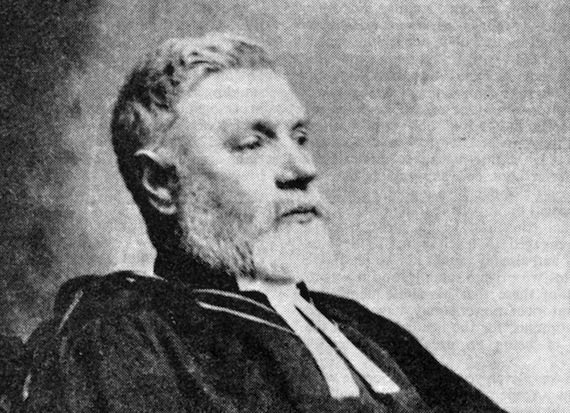
The evening of his sister's wedding prompted George Matheson to write "O Love That Will Not Let Me Go"
Journalists excel at who, what, when, where – often including all these elements in the lead paragraph or even first sentence of a news story. And Berklee Music instructor Pat Pattison uses “Who, What, When, Where” to teach Object Writing in his songwriting exercise book Songwriting Without Boundaries: Lyric Writing Exercises for Finding Your Voice.
If you write liturgy or program music for your church, thinking about the Four W’s can help you find songs that cover a broad range of Scripture. And if you write songs for congregational worship, thinking about Who, What, When, Where can help your songwriting process, and give your body of work new dimensions. Practice writing songs that focus on each W, to expand the content of your songs and cover more elements of the Bible and God’s story.
When Kristen and I wrote the worship record The Whole Big Story (which you can download for free on your top-right) we used Who, What, Where but we focused on When, because we wanted to tell the story of Christ from the beginning of creation to the Second Coming. You may be drawn to one of these W’s more than the other at different times and for different reasons, but all of them can help you discover or write good songs for corporate worship.
Who Worship Songwriting:
Practice writing worship songs from the perspective of other characters. One way to do that is through real people in the Bible or characters in Jesus’ parables. You can either write a ballad (“story song”) in third-person that reminds us of God’s faithfulness and power as seen through the story of a character, or you can get inside the head of a character, telling the story through their eyes (first person).
If you write first person, and you choose a real figure like Abraham, it’s important to maintain biblical fidelity. Don’t portray a different Abraham than the one we encounter in scripture.
The other option for “Who” writing is to put yourself in the place of an imagined person – for instance, someone being sent into long-term missions in South America. How would this person pray? You don’t have to specifically mention the trip, or South America. Just think “What would I worry about, pray about and be excited about if I were preparing for mission?”
The great thing about this of course is that we’re all on mission for Christ, wherever we are. Thinking about a foreign missions character is a way to bring that truth into focus.
Here are some writing prompts to help you get started and get a feel for what “Who” writing is all about:
- Tamar, pregnant with Judah’s child
- Moses before the Red Sea
- Paul and Silas, locked in a jail cell
- Someone whose faith is tested by a friend’s suicide
- A pastor officiating a wedding. The last two couples he officiated for are now divorced.
What Worship Songwriting:
Practice writing worship songs based on an inanimate object. This might seem like a silly idea for worship songs, but it will help you learn how to create and work with metaphors.
For instance, “A River” could lead to something like “It Is Well With My Soul.” Kristen and I used the image of a tree for “You Grew The Tree,” which is ultimately about the tree used to make the cross. Woody Guthrie used the image of a railroad train for “This Train Is Bound For Glory” (it was originally a slave song, possibly referring to the Underground Railroad, but Guthrie wrote the version we know today). And Augustus Toplady wrote “Rock Of Ages” when he had to duck into a cave during a rainstorm.
- A doormat
- A red pen
- Fallen leaves
- A stock certificate
- A windowpane
When Worship Songwriting
Practice writing worship songs based on an event or moment in time. This can either be a specific event, like the wedding in Cana where Jesus turned water into wine, or a generalized event, like “A Wedding.”
You can even use the feelings that a certain event gives you to springboard into a song, without mentioning the event itself in the song. For example George Matheson wrote “O Love That Will Not Let Me Go” on the evening of his sister’s wedding. Matheson was a blind pastor, whose sister had been the one to take care of him. And Matheson himself had been engaged years before, but his fiancé broke off with him when she learned he was losing his sight. She said she “couldn’t go through life with a blind man.”
- The trial of Jesus before Pilate
- A hard winter season
- The inauguration of a new leader
- Passover
- First light of morning
Where Worship Songwriting
Practice writing worship songs based on a place – either a specific place like Central Park or Herod’s Temple, or a type of place like “A Barn” or “A Credit Union.”
- Dormant former church building
- A bus stop
- The Jordan River
- A hospital emergency waiting room
- Samaria